When Holly Lampen looks back on her younger self, she remembers a girl who sometimes hesitated to share her work. “I don’t know, when I was younger I felt timid about sharing my work or thinking about what my friends were doing, what they were studying,” she says. “My advice to my younger self would have been, you know who you are inside, you know what you want to do, you know what gifts you have. Trust yourself and follow those. Embrace them, explore them. Be diligent about that and give yourself permission to try other things as well, but also to dig deep into what you really enjoy.”
Holly grew up in Grand Rapids, Michigan, where she noticed early on that art was the language she spoke best. “As maybe like a third grader, I just kind of noticed that I communicated better through images and so I was drawing all the time,” she recalls. While middle school sent her interests in a dozen different directions, she always came back to sketching plants and animals in the woods. In high school, a couple of art classes made it clear nothing else gave her the same satisfaction. That clarity led her to art school courses, then to Rhode Island School of Design, where she threw herself into experimenting with every medium she could.
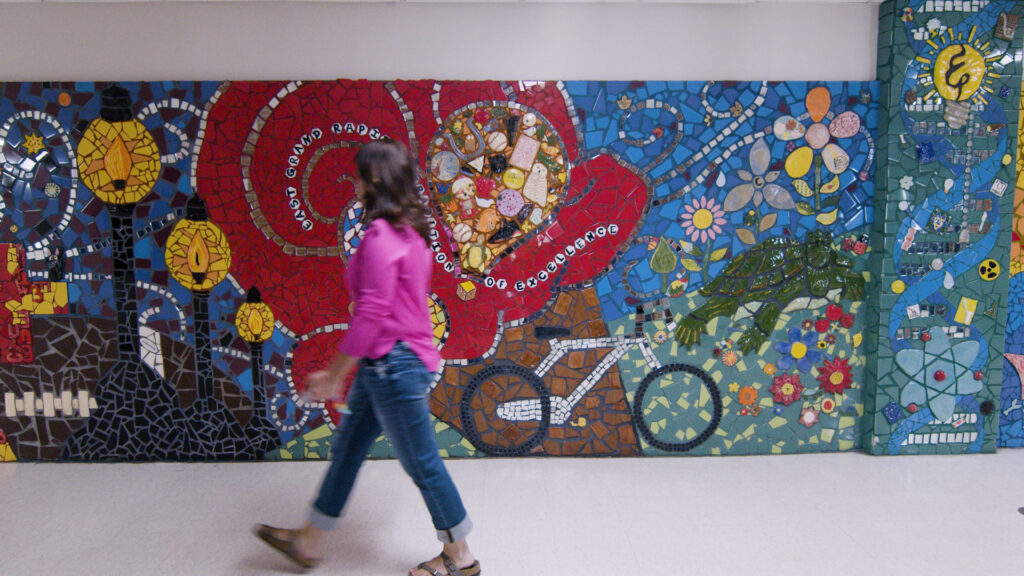
The “why” behind her choice to study art came down to something simple but essential. “For me it was like seeing something in my head come to life on a page or on a flat surface or in a sculpture,” she explains. “It was this way of getting other people to see what I was thinking about. In a lot of ways I just felt like a really average normal kid, but I knew I had other things going on in my head that maybe weren’t so average or normal or were unique in some way. It was my way of communicating my unique ideas with the world around me.”
That desire to express what she carried inside eventually expanded into a new purpose: teaching. Holly didn’t always feel comfortable in school as a kid. “I didn’t really feel like I always fit in with everyone and I had a hard time conforming to the six hours a day in one place in one chair in one room. It was not easy for me and I knew there would be a better way for kids to learn.” Becoming an art teacher gave her the chance to create the kind of classroom she wished she had. “I felt like I could really make a difference in kids’ lives and maybe in the whole school. By just making school a place where kids felt celebrated and felt like they had something unique to offer. Giving them a voice. Not necessarily in speaking, but actually creating those images that everyone around them could see and giving them power in their environment. Making them feel valued every single day in a space was really important to me.”
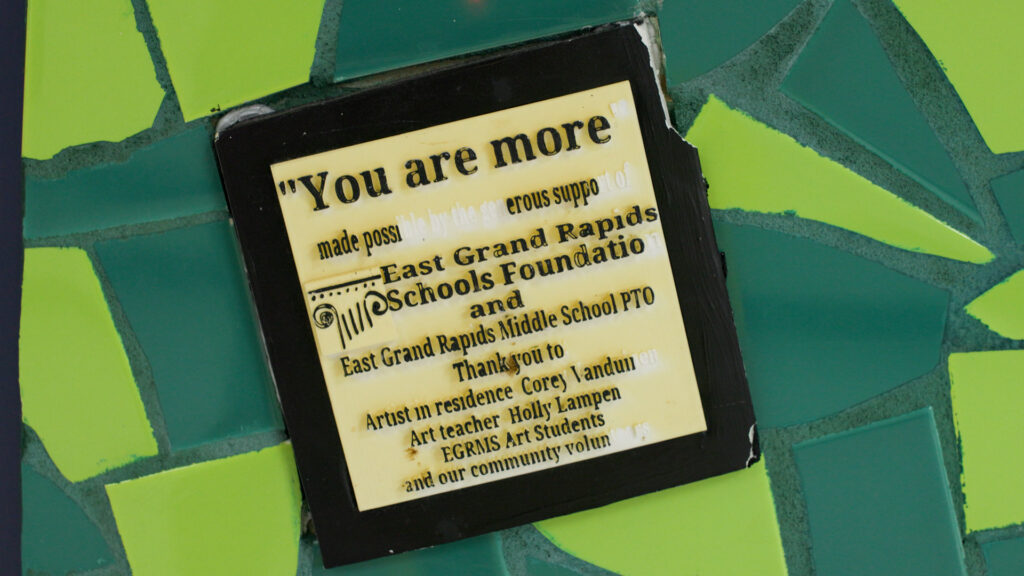
Balancing life as both a teacher and a practicing artist isn’t always easy, but Holly insists it’s essential. “If you’re not a working artist, it’s really hard to teach art,” she says. Her own painting and studio practice keep her close to the challenges her students face. “With art, you’re always exploring new things when you create your own art. So you’re continually going through those steps of trying to figure out how to approach a problem in a new way, which is exactly what a kid is going through every time they’re making a piece of art. They’ve never done it before. They’re trying to solve those creative problems along the way.”
That loop between making and teaching feeds both sides of her life. “When I spend a night working in my studio and then head to school the next morning to teach, I have so many new things to talk to the kids about or new ways of looking at what they’re working on,” she says. “It’s an incredible mix to have.”
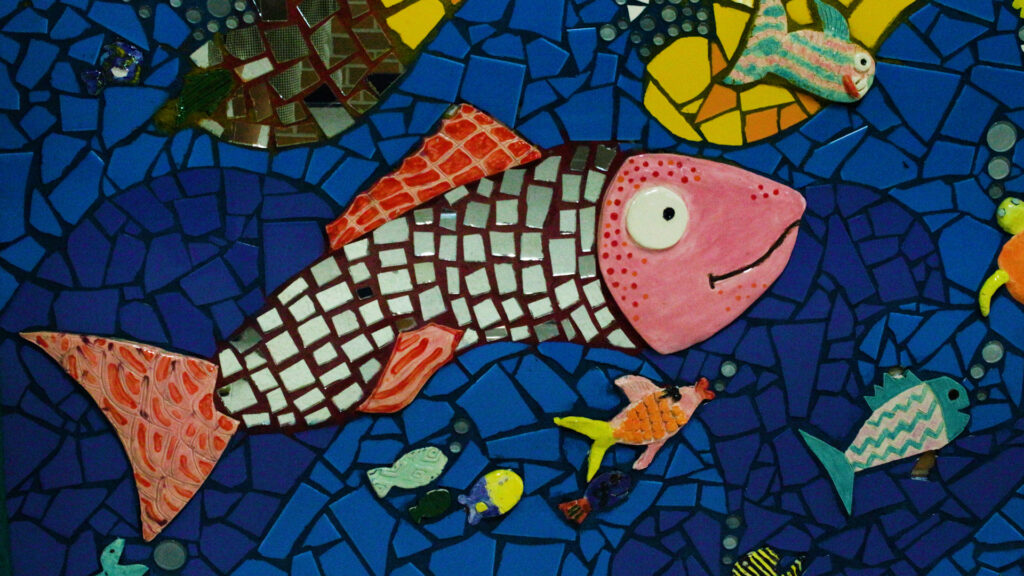
Her goals as a teacher extend beyond the classroom. She’s worked for years to make the school itself feel like a gallery, filling the hallways with student work so kids can see their art having a lasting impact. “I want the kids to see the impact of their work and their work as a team in their everyday and see how it affects their environment,” she explains. “So that when they move on and they’re out into the world, they become people who appreciate art and continue to support it and see that new things need to happen in their visual environment.”
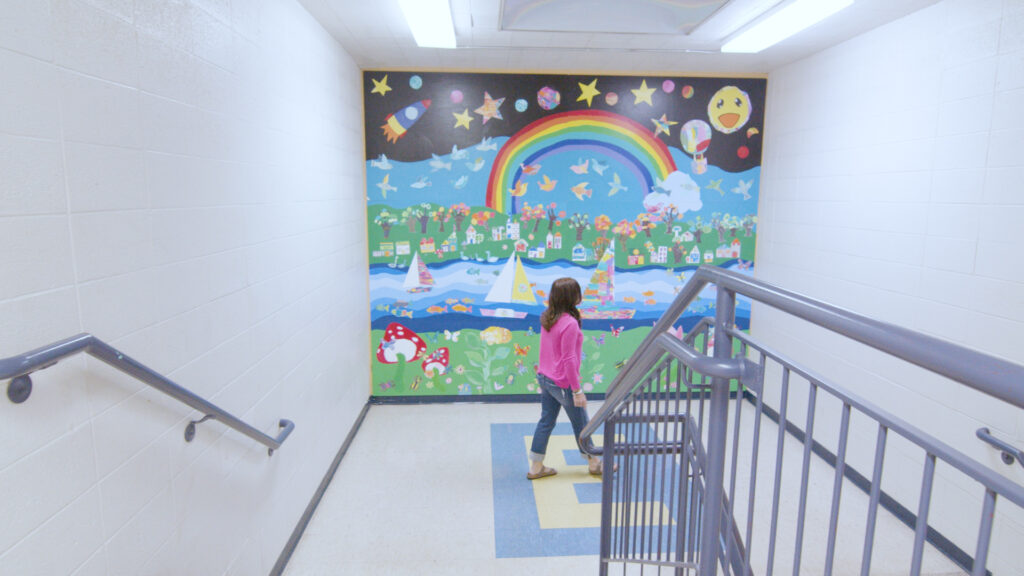
Holly’s own work as an artist is deeply rooted in memory and environment. Growing up in Michigan meant endless visits to beaches, lakes, and a cabin in the Upper Peninsula. Nature and color have stayed with her ever since. “I’m really inspired by those tiny bits of bright color you find on the beach,” she says. “It might even be something like an old bottle cap or a little piece of sea glass. Or somebody floating in their bright orange life jacket out on the blue water. I really like to play with color relationships in the natural world and hide little pieces of color that people can respond to and maybe reflect upon a memory that they have at some point in their childhood.”
Childhood memories are central to her work. She remembers spending hours in hospitals where her grandmother stayed, wandering the halls and finding her way by the artwork on the walls. “I realized art can make you feel more comfortable in a space that might be intimidating or scary,” she recalls. “And it can also help you connect personally with a space and maybe even have some ownership when you start developing a strange relationship with a painting that you look at often.”
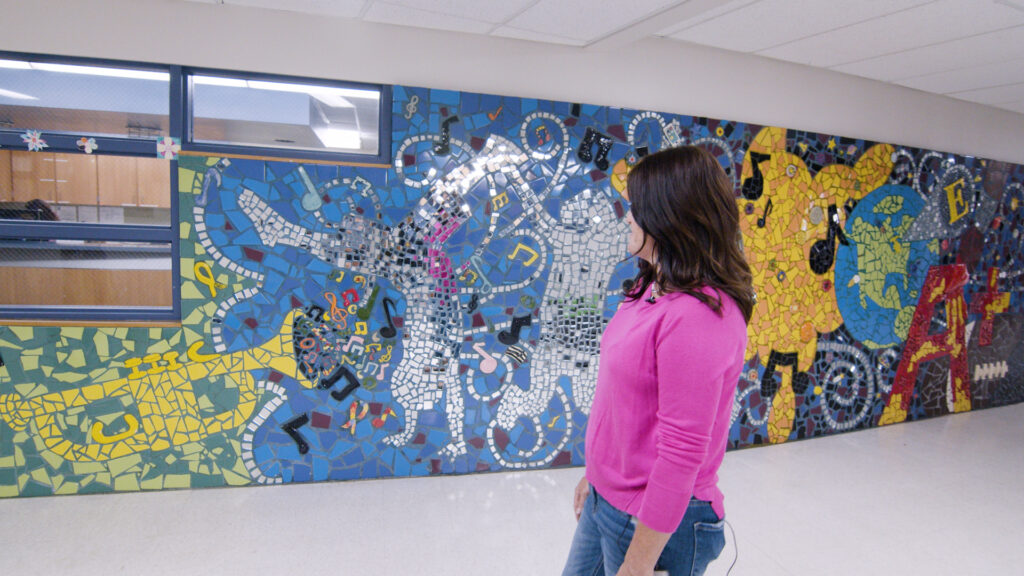
That belief — that art has the power to transform environments and make people feel seen — carries through everything Holly does. Whether she’s creating her own work or teaching students, the purpose remains the same: to use art to give people a sense of connection and belonging.
If she could offer advice to young artists, it would come from her own hard-earned lessons. “Work is hard. So find a job that feels like play to you, that you are really interested in… most days I find those playful moments that bring a little bit of mystery, a little bit of surprise in each day, and it keeps you going back.” She encourages students to push away doubt and trust what they bring to the table. “Be brave. Be respectful of your own talents and your special gifts because that is what’s going to fuel you and keep you going in life. Get rid of impostor syndrome. You belong. You need to take up space. You are important. People want to listen to you. So share what you have inside of you and give back, because there are so many people that need you.”
